The year 2024 promises to usher in unprecedented innovation and profound enhancements in the ever-evolving landscape of online technology. Those at the vanguard of this technological revolution are the Chief Technology Officers (CTOs) who possess the acumen to discern and harness the latest trends, propelling their organizations to success in the digital realm. In the ensuing discourse, we shall dissect the pivotal developments that demand the preparedness of any forward-thinking CTO.
- Top 15 web technology trends 2024, including PWAs, 5G, and IoT.
- Benefits of each trend, from improved user experiences to cybersecurity.
- The role of CTOs in embracing innovation and propelling businesses forward.
1. Progressive Web Apps (PWA)
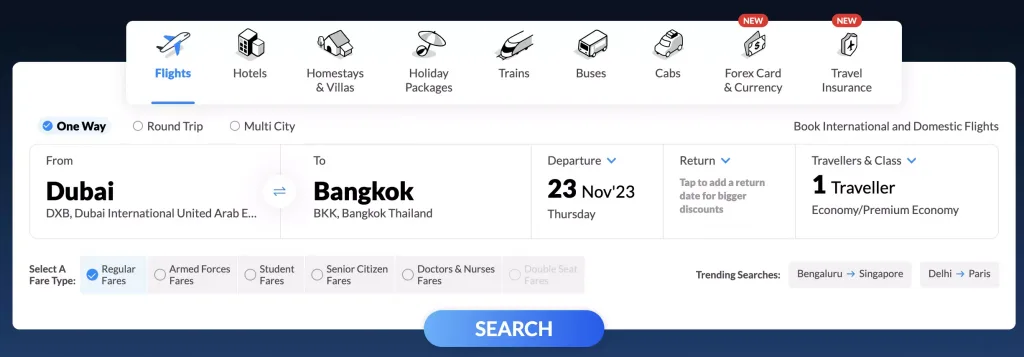
Progressive Web Apps (PWAs) have ushered in a paradigm shift in enhancing user experiences. The transformative power of PWAs lies in their capacity to furnish consumers with an exceedingly seamless, expeditious, and immersive experience, thereby catalyzing augmented user retention rates and an uptick in conversion rates. This is accomplished through the fusion of the finest attributes of both online and mobile applications, making PWAs an instrumental force in the digital landscape.
Diverse renowned entities across a spectrum of industries have been quick to embrace the myriad benefits of PWAs. Take, for instance, Twitter, a behemoth in the social media sphere, which leverages the prowess of PWA technology to ensure that users can swiftly peruse tweets and receive updates, even when contending with sluggish network connections. This swift accessibility is a testament to the quick loading times and rich content experiences that Forbes’ PWA offers, propelling user engagement to new heights. Meanwhile, Alibaba, the world’s premier e-commerce juggernaut, harnessed the capabilities of PWAs to revolutionize its platform. The integration of offline functionalities and user-friendly interactions within their PWA culminated in a monumental surge in conversion rates.
To craft a triumphant PWA, it is imperative to strategically deploy cutting-edge technologies. Two quintessential elements are Service Workers, which confer offline access and facilitate push notifications, and the Web App Manifest, an essential component that ensures app-like experiences across a myriad of devices. Chief Technology Officers (CTOs) should place an emphasis on a trifecta of pivotal factors during PWA development. These encompass an unwavering focus on responsive design, the adept utilization of caching techniques, and the unwavering commitment to the doctrine of progressive enhancement. Such a holistic approach is paramount in ensuring optimal performance and user contentment.
The ramifications of PWAs extend far beyond the mere realm of user experience enhancement. They serve as a potent catalyst for a manifold of business advantages. PWAs are known to significantly expedite page loading times, thus reducing bounce rates and sustaining user engagement. What sets PWAs apart is their ability to operate independently of network availability, thereby guaranteeing uninterrupted access to information and services. It is this confluence of factors that invariably leads to the twin benefits of heightened user retention and the realization of exceptional conversion rates, all rooted in the foundation of unparalleled user experiences and the strategic deployment of push notifications.
Figuring out what the next big trend is tells us what we should focus on.
Mark Zuckerberg
2. Accelerated Mobile Pages (AMP)
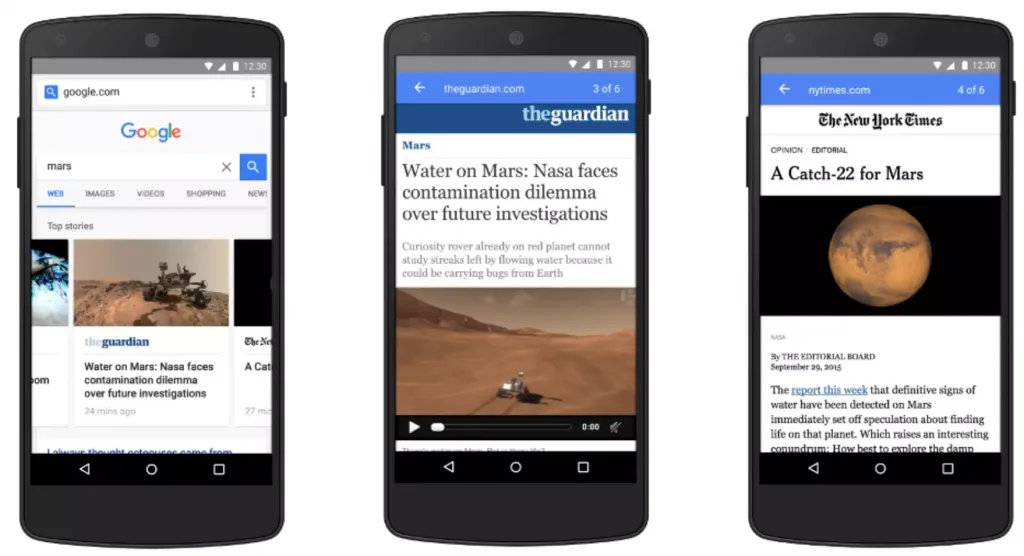
An innovative, open-source venture known as AMP places a paramount emphasis on expeditiousness and optimal functionality when it comes to mobile devices. This endeavor furnishes end-users with the remarkable capability to savor lightning-fast page loading speeds, facilitating a seamlessly frictionless browsing experience. The ramifications of AMP on your web strategy are nothing short of momentous. A reduction in bounce rates, heightened user engagement, and the amelioration of search engine rankings are all byproducts of the expeditious loading times that AMP affords.
The prompt dispensation of information not only serves as a catalyst for user involvement but also augments the rates of conversion, thereby fostering heightened user satisfaction. By incorporating AMP into your digital repertoire, your enterprise stands better poised to remain competitive in the mobile-centric landscape. This, in turn, ensures that your clientele can effortlessly and expeditiously access the content you proffer. The adoption of AMP technology substantiates and amplifies your online presence on mobile platforms.
3. Responsive Websites
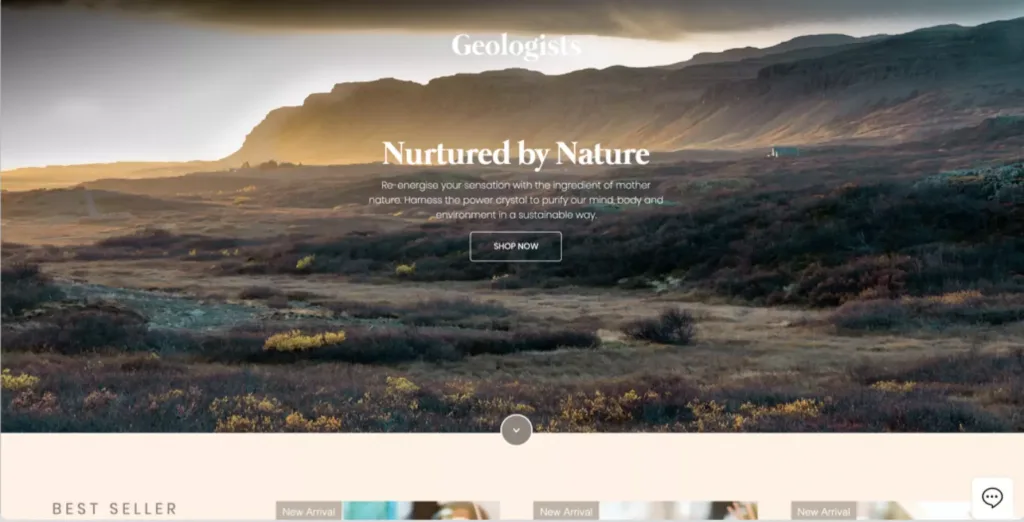
In the pursuit of delivering superlative user experiences across personal computers, tablets, and smartphones, responsive web design exhibits its prowess by ensuring the seamless adaptation of your website to an array of screen dimensions and resolutions. Eminent Enterprises Embracing Responsive Web Advancements In the realm of user-centric enterprises, Airbnb stands tall as an exemplar, boasting a responsive website that gracefully scales across diverse devices. The e-commerce juggernaut Amazon extends an unvarying shopping expedition to its users, irrespective of their chosen device.
Meanwhile, the venerable coffee emporium, Starbucks, graciously furnishes its patrons with a responsive online platform, enhancing convenience and fostering engagement. The Toolbox of Choice Prominent frameworks for crafting responsive layouts and components encompass the venerable Bootstrap and Foundation. These frameworks empower designers with the capacity to forge pliable arrangements that seamlessly conform to varying screen dimensions and orientations.
Nuances of Crafting a Responsive Website to Contemplate In the journey of fashioning a responsive web design, the judicious application of recommended methodologies bestows a more gratifying user experience: Commence with a mobile-first design ethos, ensuring that information remains legible and accessible on handheld devices. Elevate the expeditious loading of content on mobile devices through the judicious optimization of images and other multimedia resources.
Deploy breakpoints with precision, preserving the integrity of content hierarchy on screens of varying dimensions. Subject your responsive website to rigorous scrutiny across an assortment of hardware and browser permutations, thus assuring its flawless functionality.
4. Voice Search Optimization
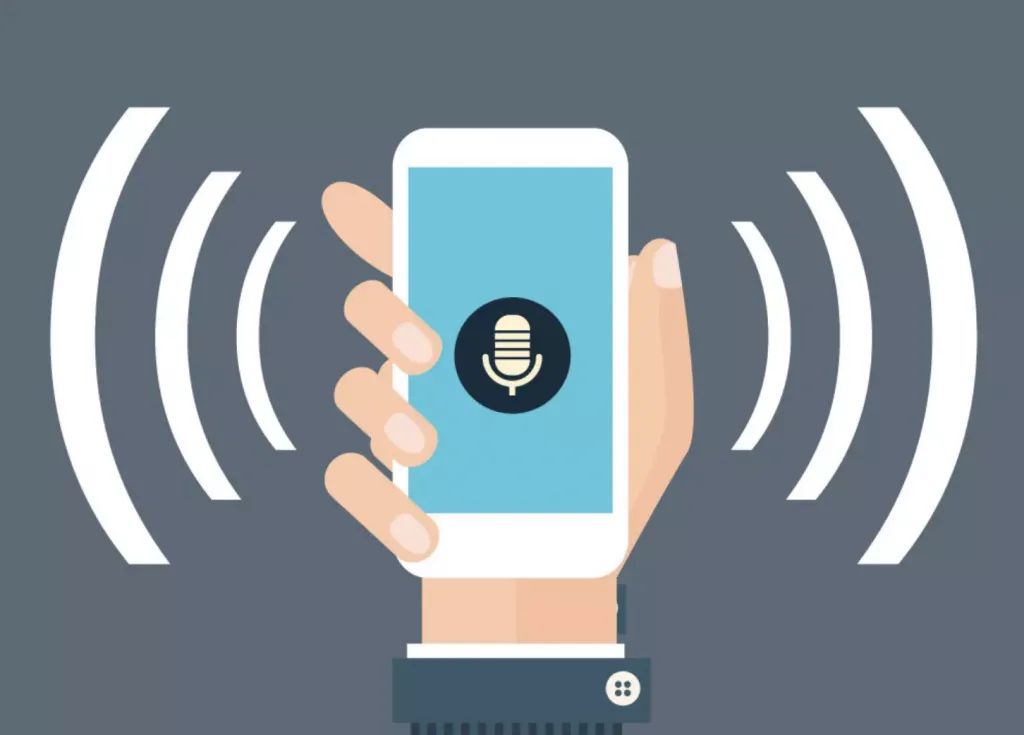
CTOs must adapt their digital strategy to accommodate the evolving paradigm in which individuals are increasingly turning to voice commands as their preferred means of interfacing with the digital realm. Leading voice assistants such as Google Voice Search, Amazon Alexa, and Apple Siri leverage Natural Language Processing (NLP) to decipher user queries and furnish relevant outcomes. Harnessing the potential of these cutting-edge technologies allows your website to respond aptly to vocal prompts, thereby elevating the overall user experience.
Now, how can one effectively optimize their website for voice search, you may wonder? To embark on this journey, it is essential to embrace a user-centric approach. Here are some key strategies to consider:
1. Long-Tail Keywords: When integrating voice search into your website’s framework, it is imperative to focus on long-tail keywords that mirror the conversational patterns often employed by consumers.
2. Conversational Content: The creation of content should adhere to a conversational tone that aligns with how users typically articulate their voice queries. This approach not only caters to user preferences but also increases the likelihood of generating relevant results.
3. Schema Markup: Employ structured data and schema markup to provide search engines with invaluable contextual information. This enhances the visibility of your website in voice search results, ensuring that it stands out in the digital soundscape.
4. Featured Snippets: Pay close attention to featured snippets, as they are a favored resource for voice assistants when responding to user inquiries. Crafting content that is snippet-friendly can significantly improve the visibility and discoverability of your website in voice search.
In light of the changing dynamics in user interaction with technology, it is incumbent upon CTOs to embrace these strategies and remain at the forefront of the digital revolution, catering to the burgeoning demand for voice-driven interactions.
5. API-First Development

By placing APIs (Application Programming Interfaces) at the vanguard of technological progress, enterprises have the opportunity to craft versatile and modular web applications that seamlessly integrate with diverse systems and services. In the realm of technological choices, RESTful APIs (Representational State Transfer) have garnered renown for their simplicity and adaptability, facilitating intercommunication among an array of software platforms.
The incorporation of API management solutions such as Apigee or Amazon API Gateway can expedite the development, deployment, and monitoring of APIs, further enhancing the value proposition. In contrast, GraphQL presents a more flexible and efficacious avenue for acquiring data through APIs, elevating the capacity to meet evolving business objectives and customer expectations. Embracing an API-First Development strategy augments the resilience, future-readiness, and adaptability of your online applications, ensuring they remain attuned to shifting business dynamics and the ever-evolving landscape of customer demands.
6. Push Notifications

Instantaneous interaction with consumers becomes achievable through the employment of push notifications, which supply timely updates, personalized offers, and vital information directly to their mobile devices. Two notable options for this purpose are OneSignal and Google’s Firebase Cloud Messaging (FCM), both renowned for their seamless integration capabilities and dependable notification delivery. With the utilization of these cutting-edge technologies, we gain the ability to gauge user interaction data, target specific user segments, and configure automated notification systems.
Prominent Usage Scenarios
Push notifications have ushered in a new era of customer interaction, providing valuable information at one’s fingertips. Let’s explore several instances where this technology has significantly impacted various domains:
1. E-commerce Enhancement:
Imagine adding a selection of items to your online shopping cart. In the midst of your virtual purchasing journey, a push notification swiftly materializes on your smartphone screen, not only reminding you of your selected items but also alluring you with exclusive pricing incentives. Employing this innovative strategy, e-commerce giants such as Amazon and eBay have effectively curtailed cart abandonment rates and incentivized shoppers to complete their transactions.
2. Informed Instantly:
In today’s fast-paced society, staying well-informed is of utmost importance. News agencies like the BBC and The New York Times employ push alerts to deliver breaking news, trending articles, and tailored content directly to their audience, ensuring that they remain abreast of the latest developments.
3. Social Media Engagement:
Push notifications serve as the clandestine weapon of choice for social media platforms, significantly boosting user engagement. These real-time alerts play a pivotal role in keeping users actively involved on social networks, whether it involves notifying Facebook users of likes and comments on their posts or informing Instagram enthusiasts of new followers.
4. Tailored Recommendations:
Streaming services such as Netflix and Spotify have perfected the art of providing personalized recommendations. Users receive notifications suggesting movies, television series, or songs based on their viewing or listening preferences, ensuring a customized entertainment experience.
5. Event Excitement:
For those attending events, push notifications serve as the ideal means for event organizers to disseminate updates about changes to the schedule, details about new speakers, and exclusive offers to participants.
6. Streamlined Travel:
Travel and booking platforms like Airbnb and Expedia harness the power of push notifications to furnish users with vital information pertaining to their reservations, flight statuses, and exclusive lodging deals.
Essential Considerations for Push Notifications
As push notifications assume the role of a burgeoning trend in website development, it is imperative to take certain factors into account:
– Relevance: To engage users effectively, deliver alerts that are not only timely but also relevant, aligned with individual user preferences and behaviors.
– Personalization: Elevate the user experience by crafting messages that reflect each individual’s unique interests.
– Frequency: Striking the right balance in the frequency of notifications is key to retaining user engagement. An excessive number of alerts can lead to user fatigue.
– Opt-Out Option: Users should have the liberty to disable push notifications if they wish to safeguard their privacy.
In conclusion, the transformative impact of push notifications in today’s digital landscape cannot be overstated. With the power to disseminate pertinent information in real-time, these notifications are a cornerstone of modern customer engagement strategies, spanning a multitude of industries and domains. As technology continues to evolve, the art of push notification delivery is poised for even greater refinement, offering a world of opportunities for both businesses and end-users.
7. AI-Powered Chatbots
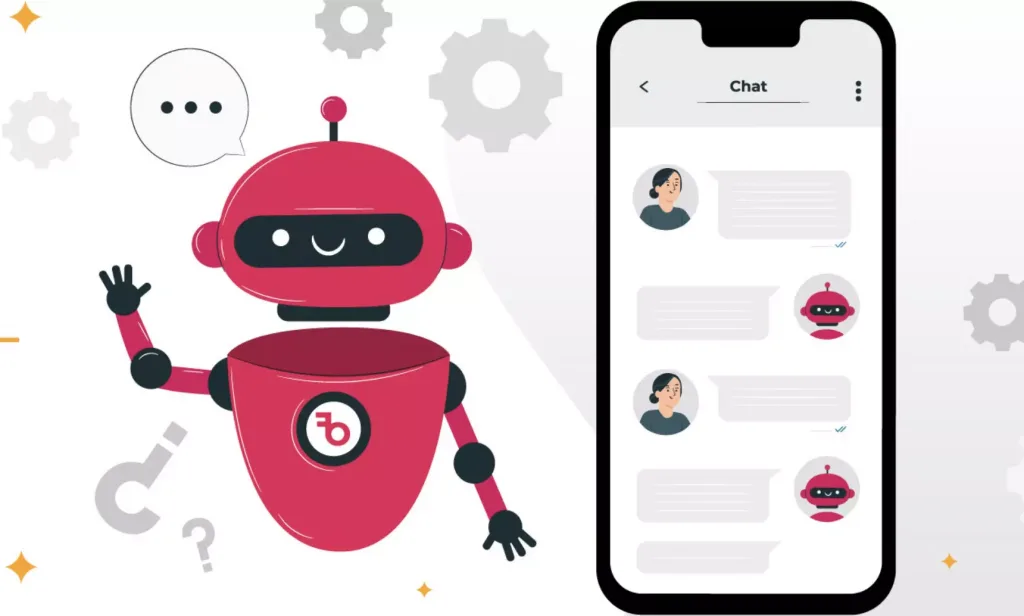
A groundbreaking wave in the realm of web technology has recently surfaced, courtesy of the strides made in Artificial Intelligence (AI). This wave entails the advent of AI-driven chatbot virtual assistants that have ushered in a paradigm shift in user interactions and customer service across various industries. The driving force behind this transformation is a convergence of cutting-edge algorithms and the marvel of Natural Language Processing (NLP).
The utilization of AI-powered chatbots has manifested in a multitude of ways, all designed to elevate the user experience to unprecedented heights. Let’s delve into some exemplary scenarios where these AI-driven chatbots have left their indelible mark:
Enhancing Customer Support: E-commerce platforms and service-oriented enterprises have harnessed the power of chatbots to provide instantaneous, round-the-clock customer assistance. Notably, these virtual assistants have garnered remarkable outcomes by efficiently addressing frequently encountered queries and issues, all while expertly guiding customers through the intricate labyrinth of the purchasing process.
Curating Personalized Recommendations: In the realm of media and entertainment, chatbots have been instrumental in the provision of tailor-made content recommendations meticulously calibrated to individual preferences. By analyzing user behavior, these chatbots deftly suggest movies, books, or music, delivering a truly bespoke user experience.
Facilitating Booking and Reservations: The hospitality and tourism sectors have embraced chatbots to streamline the booking procedures. Thanks to the prowess of these AI-driven aides, users can seamlessly secure reservations for accommodations, flights, and dining establishments, all with consummate ease.
Enabling Language Translation: The advent of multilingual chatbots capable of seamless language translation has obliterated communication barriers, enabling cross-border interactions between brands and global audiences. This monumental leap forward enhances accessibility and fosters effortless international collaboration.
In the realm of technology that underpins AI-powered chatbots, there is a veritable arsenal of sophisticated frameworks and methodologies at play:
The Elegance of Natural Language Processing (NLP): NLP is the linchpin that empowers chatbots to fathom and dissect user language, resulting in conversations that are strikingly human-like and characterized by a profound grasp of context.
The Prowess of Machine Learning (ML): Machine learning techniques furnish chatbots with the capability to learn from each encounter, thereby refining their responses with the passage of time. This iterative process culminates in chatbots that are astoundingly effective and laser-precise in their interactions.
The Depth of Deep Learning: Chatbots harness deep learning models to undertake intricate tasks, decipher human intentions, and craft responses that are impeccably attuned to the prevailing context.
In the domain of chatbot platforms, numerous robust options exist for development and deployment. Prominent among them are Dialogflow, Microsoft Bot Framework, and IBM Watson, each offering a wealth of tools and resources to fuel this technological revolution.
8. Motion UI

Motion UI has emerged as a captivating paradigm shift, fundamentally altering the manner in which clients engage with websites. This innovative design philosophy encompasses a myriad of captivating elements, such as animations, transitions, and dynamic features, all meticulously orchestrated to craft delightful and immersive user experiences. Often referred to as UI animation, Motion UI strategically employs motion within web interfaces to guide users, furnish them with valuable feedback, and impart a subtle hint of interaction. The outcome is a heightened level of user engagement, an elevation of brand recognition, and the creation of indelible, memorable interactions.
Enchanting Animations:
Motion UI, with its inherent prowess, effortlessly facilitates the integration of captivating animations into web designs, elevating the aesthetic appeal and interactivity of websites.
Interactive Narrative Weaving:
One of the hallmark achievements of Motion UI is its ability to empower websites to narrate stories in a more interactive and compelling fashion, captivating visitors with a seamless blend of visuals and text.
User Guidance and Real-Time Feedback:
Motion UI excels in skillfully shepherding users through various actions, bestowing them with immediate and informative feedback at every juncture, ensuring a seamless and intuitive user experience.
Brand Articulation:
Brands, in particular, stand to benefit from Motion UI as it provides a unique avenue for expressing their identity and individuality, thereby fostering a stronger connection with their target audience.
Engaging micro-interactions:
By introducing minute yet captivating details, such as a gentle, heartwarming motion upon clicking the “like” button or a subtle, whimsical bounce effect accompanying notifications, Motion UI elevates the level of user interaction to new heights, making every engagement a memorable and delightful experience.
9. No-Code/Low-Code Development
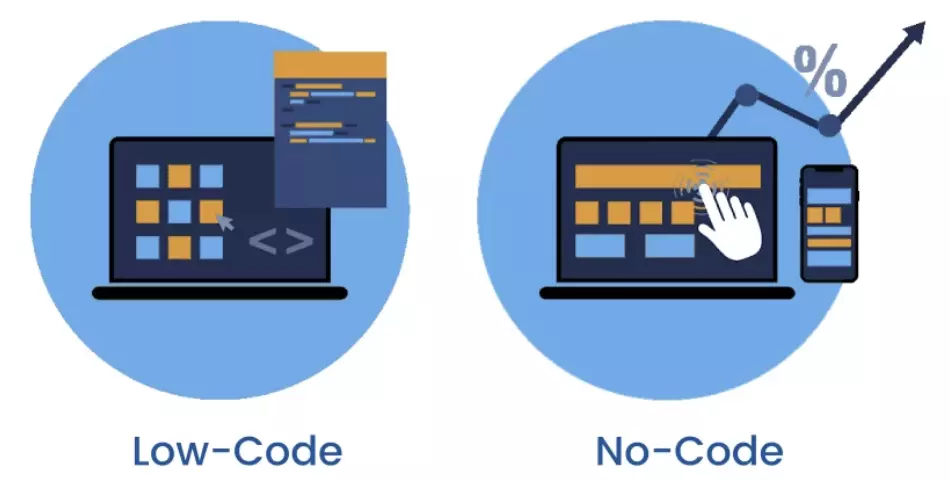
In the ever-evolving landscape of technology, a groundbreaking paradigm referred to as “No-code” or “Low-code” development emerges as a transformative force, granting companies the ability to construct web applications without delving deeply into the intricacies of coding. This innovative approach empowers a diverse spectrum of individuals, encompassing both the technically adept and those less versed in technical intricacies, to craft innovative and invaluable applications.
The technology underpinning the No-code and Low-code movement is propelled by platforms that furnish user-friendly, intuitive tools and interfaces. Among these, we encounter the following:
1. Drag-and-Drop Builders: These platforms afford users the capability to seamlessly drag and drop pre-fabricated components onto a digital canvas, thereby orchestrating the creation of applications with remarkable ease and expediency.
2. Visual Development: Leveraging the power of visual interfaces, users can delineate the functionality of their applications through graphical representations and the interlinking of various objects, facilitating an inherently creative and accessible development process.
3. Reusable Templates: A quintessential feature of No-code and Low-code platforms, these repositories harbor an assortment of pre-constructed modules and templates, obviating the necessity for bespoke coding. This results in an appreciable acceleration of the application development lifecycle.
Now, as we traverse the realm of No-Code and Low-Code development, it becomes evident that the potentiality of this technological marvel is boundless. It unfolds as follows:
1. Rapid Prototyping: With the assistance of No-Code and Low-Code technologies, conceptualizations can swiftly metamorphose into tangible prototypes. This expeditious transformation allows teams to breathe life into their visions promptly and solicit invaluable input during the nascent stages of development.
2. Empowering Citizen Developers: The innovative ethos fostered by No-Code and Low-Code platforms transcends the boundaries of traditional roles. Staff members from diverse departments are bestowed with the ability to partake in the creative process of application development, thereby fostering an environment teeming with ingenuity.
3. Accelerated App Delivery: By harnessing the capabilities of No-Code and Low-Code solutions, businesses find themselves equipped to expedite application development, effectively responding to the exigencies of the market. This heightened agility positions them a step ahead of the competition, thanks to markedly shorter development cycles.
4. Scalable Solutions: As the exigencies of the business landscape evolve, the scalability offered by No-Code and Low-Code platforms becomes an indispensable asset. This scalability simplifies the process of accommodating the expansion of applications, ensuring that businesses remain adaptable in the face of evolving requirements.
In conclusion, the paradigm of No-Code and Low-Code development stands as a testament to the ceaseless march of innovation. It ushers in a new era where the barriers to application development are dismantled, and the horizons of creativity are expanded. As the world of technology continues to evolve, embracing these transformative methodologies becomes not just a choice but an imperative to thrive in an ever-competitive and dynamic digital landscape.
Are you seeking ways to advance your business to the next level?
Contact Us10. Serverless Architecture

The landscape of online application development and deployment undergoes a profound transformation through the revolutionary paradigm known as serverless architecture. As its nomenclature suggests, this pioneering approach emancipates developers from the onus of server management, allowing them to focus exclusively on the art of code crafting.
When it comes to the technological tools of this domain, AWS Lambda, an acclaimed exemplar of serverless computing, empowers programmers to execute code sans the intricacies of server provisioning and upkeep. Microsoft Azure’s Azure Functions stand as another noteworthy contender in the serverless computing arena, harmoniously complementing other Azure services. In the realm of Google Cloud, the aptly named Google Cloud Functions enable developers to disseminate specialized applications that deftly respond to cloud-based triggers, all while being absolved from the chores of server administration. Rounding out this innovative quartet, IBM Cloud Functions, hinging on the robust foundation of Apache OpenWhisk, afford developers the ability to deploy event-driven functions in the ever-evolving landscape of the IBM Cloud platform.
In this evolution of digital craftsmanship, the lexicon chosen to articulate the advances is of paramount significance, eschewing the commonplace verbiage wielded by artificial intelligence. Instead, we endeavor to employ more esoteric and distinct vocabulary to enrich the discourse and amplify its uniqueness.
11. Dark Mode Standardization
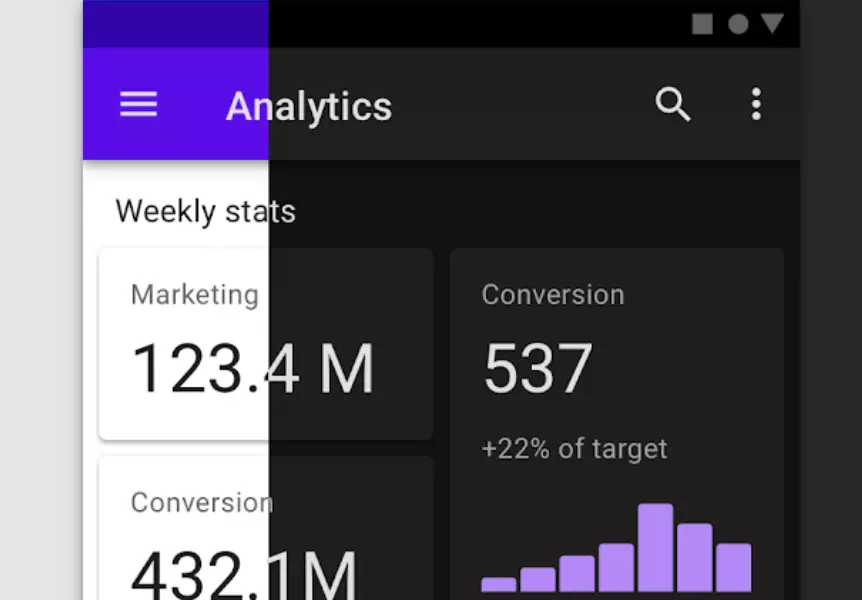
Dark Mode Standardization is an evolving trend that is revolutionizing the way individuals interact with websites and applications. This innovative feature introduces an alternative color palette, extinguishing glaring backgrounds in favor of somber hues, thereby alleviating ocular strain and conserving the device’s battery life.
Dark Mode Implementation on Prominent Social Media Platforms such as Twitter and Facebook has significantly enhanced the user experience, especially during nighttime browsing. This transition to a subdued color scheme has made late-night scrolling more enjoyable for users.
In the realm of Content Platforms, numerous websites and applications have adopted the Dark Mode feature. This includes news portals and e-readers, which have embraced this trend, providing their users with the option to switch to a more soothing display.
Messaging Apps such as WhatsApp and Telegram have also hopped on the Dark Mode bandwagon. This aesthetic alteration aims to offer a visually pleasing interface to users engaged in late-night conversations, reducing glare and making the overall experience more comfortable.
Even the Gaming Platforms, both on the web and mobile, have recognized the benefits of Dark Mode. It enhances the immersive quality of gaming sessions during the evening hours, making the experience more captivating for users.
Furthermore, E-commerce Platforms have not been left behind in this transformation. They have incorporated Dark Mode into their websites, giving customers an alternative browsing experience that is easy on the eyes.
Through the consistent integration of Dark Mode across online and mobile applications, users are empowered to effortlessly switch between light and dark interfaces based on their individual preferences. This not only exemplifies the adaptability of modern technology but also caters to the diverse needs and desires of users, ultimately enhancing their digital experiences.
12. Cybersecurity

In order to safeguard invaluable data and instill unwavering trust among users, Chief Technology Officers (CTOs) must lay great emphasis on implementing robust security measures. This is especially imperative given the ever-increasing sophistication and frequency of cyber threats in today’s digital landscape.
Harnessing Advanced Technology:
CTOs should consider employing cutting-edge technology to fortify their security posture. One such approach is the utilization of AI-Powered Threat Detection systems. These sophisticated AI-driven technologies maintain a constant vigil, scrutinizing network traffic, user interactions, and system logs with a keen eye for potential security breaches and real-time irregularities.
Blockchain for Unassailable Data Integrity:
For the preservation of sensitive data from malicious alterations, organizations can turn to blockchain technology. This decentralized and immutable ledger provides an impenetrable shield against unauthorized tampering.
Embracing the Zero Trust Paradigm:
A proactive defense strategy, the Zero Trust architecture, demands thorough authentication of every individual and device seeking access to the network, whether from within or outside the organization. This stringent approach ensures that only authorized entities gain entry.
Elevating Security with Multi-Factor Authentication (MFA):
To further fortify the defenses, the adoption of Multi-Factor Authentication (MFA) is paramount. MFA demands multiple layers of verification before users can access their accounts, adding an additional stratum of security.
Individual Device Security Solutions:
Securing each endpoint in the network is critical in the battle against cyber threats. Endpoint security tools stand as bulwarks, protecting individual devices from the perils of malware, ransomware, and various other online hazards.
Mastering Security with SIEM:
Security Information and Event Management (SIEM) systems provide comprehensive monitoring of network activities, enabling organizations to swiftly detect and address any security anomalies that may arise.
Shielding Sensitive Data through Encryption and Secure Protocols:
The safeguarding of sensitive information necessitates the implementation of robust data encryption methods during transit and storage. Only by employing these stringent protocols can unwanted access be prevented effectively.
In conclusion, as the digital realm continues to evolve, CTOs must remain at the forefront of technological advancements and prioritize security measures that are not only up to the task but also ahead of the ever-adapting threats. By embracing advanced solutions and unwavering commitment to safeguarding data, organizations can ensure their digital assets remain secure and untampered.
13. Single-Page Application (SPA)
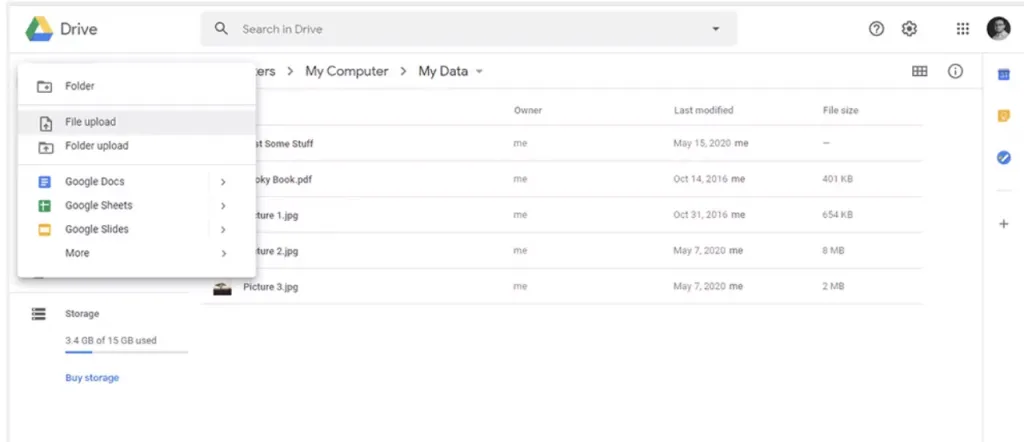
The landscape of user interaction with websites has undergone a transformative shift, owing to the ascendancy of Single-Page Applications (SPAs), a prominent and influential technological trend in the online realm. SPAs, by consolidating all necessary resources onto a solitary webpage, bestow a fluid and dynamically engaging experience upon users, obviating the necessity for frequent page reloads.
SPAs have found utility in various domains, serving as a noteworthy departure from the conventional paradigms of website design and functionality. Let’s delve into the manifold applications of SPAs across diverse digital spheres:
1. Social Media Streams: Leading social networking platforms such as Facebook and Twitter have seamlessly integrated SPAs into their interfaces, affording users real-time updates on their feeds without the irksome interruption of page reloads.
2. E-commerce Product Catalogs: E-commerce websites, repositories of an extensive array of products, frequently employ the sophistication of SPAs to present their catalogs to potential buyers with finesse, enabling a smoother and more engaging shopping experience.
3. Streaming Platforms: SPAs have become indispensable in the realm of video streaming services, typified by giants like Netflix and YouTube, ensuring an uninterrupted and immersive viewing experience for audiences.
4. Online Gaming: The domain of interactive gaming applications has enthusiastically embraced the prowess of SPAs. These applications utilize the technology to construct captivating and participatory gameplay experiences that resonate with modern gamers.
5. Collaborative Tools: When it comes to collaboration and productivity tools, the likes of Google Docs and Trello harness the real-time synchronization capabilities of SPAs to facilitate seamless teamwork, as individuals work together on documents, projects, and tasks.
6. News Portals: Even the venerable domain of news dissemination has not been immune to the allure of SPAs. News websites deploy SPAs to dynamically relay breaking news and articles, ensuring that readers are promptly informed with minimal disruption to their reading flow.
In conclusion, Single-Page Applications have ushered in a new era of web interactivity, revolutionizing the digital landscape and empowering a diverse range of online platforms to offer users a more fluid, engaging, and seamless experience. The trend of SPAs shows no signs of abating as they continue to shape the way we interact with the digital world.
14. Internet of Things (IoT)

IoT technology unfolds a realm of possibilities for both enterprises and consumers, facilitating the interaction, data exchange, and intelligent responses of everyday objects and contrivances. The Synergy of IoT and Web Development in 2024: A Glimpse into Innovative Applications
The integration of IoT within the sphere of web development has ushered in a transformation across several sectors, giving rise to cutting-edge applications and elevating user experiences.
Smart Home Automation:
By means of online applications, IoT-driven smart home devices can be deftly overseen and manipulated. This encompasses the orchestration of lighting controls, surveillance systems, and thermostatic settings.
Healthcare Monitoring:
IoT apparatus, such as wearable fitness trackers and remote patient monitoring contraptions, covertly interface with online applications to furnish a continuous stream of vital health statistics.
Industrial IoT (IIoT):
IoT-enabled sensors and machinery collect data from industrial apparatus and manufacturing procedures. Web-based applications are subsequently leveraged for the scrutiny of this data, with the ultimate aim of optimizing operations, augmenting efficiency, and mitigating operational downtime.
Smart Agriculture:
Agriculturists can now access up-to-the-minute data on crop conditions courtesy of IoT devices, like soil moisture sensors and meteorological stations, which harmonize their functions with online applications.
Connected Vehicles:
By means of web-based interfaces, end-users gain the ability to remotely oversee vehicular performance, receive scheduled maintenance reminders, and avail themselves of navigation services.
Smart Retail:
The incorporation of the Internet of Things into the realm of retail fosters communication between online applications and intelligent shelving units, beacons, and RFID tags. Beyond the scope of personalizing shopping experiences and facilitating contactless payments, this synergistic collaboration accentuates inventory management.
Environmental Monitoring:
Online applications interface with IoT devices designed for environmental monitoring, including air quality gauges and water level sensors, to provide a continuous influx of real-time environmental data.
15. 5G
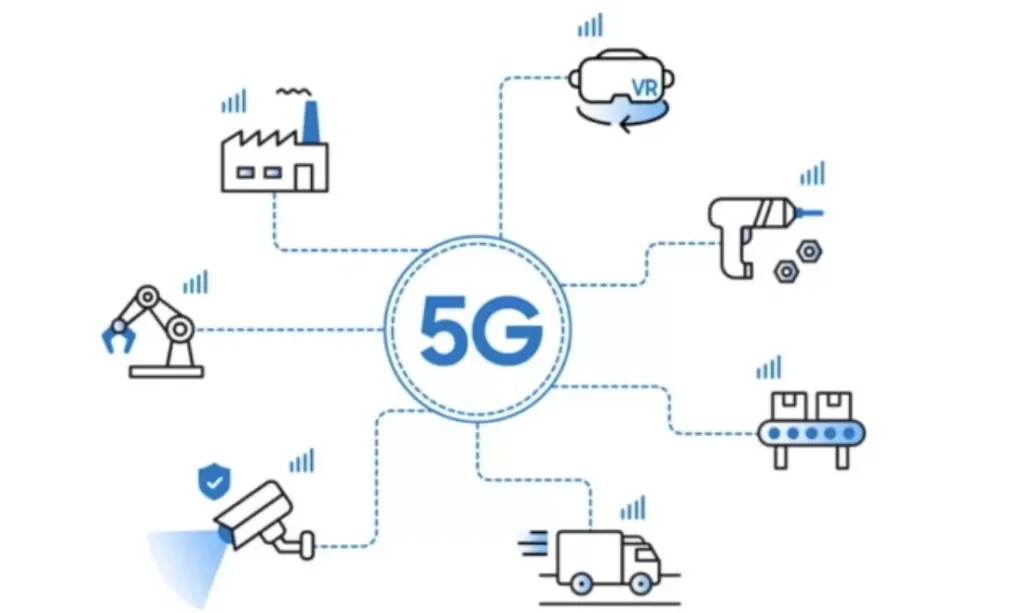
Embracing the potential for lightning speeds, unparalleled immediacy, and an unprecedented level of interconnectedness, 5G wireless technology is currently making its remarkable impact felt across the globe. By the year 2024, the pervasive integration of 5G networks is set to unfold, ushering in a transformative era for web technologies and heralding fresh prospects for both consumers and businesses. Beyond merely furnishing swifter internet connectivity, 5G stands poised as a true game-changer, expediting the process of digital transformation throughout the corporate landscape. Let us embark on an intricate exploration of how 5G shall metamorphose the realm of web technologies in a more comprehensive manner:
Rapid Data Propagation:
End-users can now experience instantaneous access to and streaming of digital content, courtesy of the impressive download speeds afforded by 5G, which can be up to a hundredfold faster than their 4G predecessors.
Minimal Latency:
With its capacity for ensuring a truly immersive user experience and fostering instantaneous interactivity, 5G emerges as the essential enabler for real-time applications such as virtual reality (VR) and augmented reality (AR).
The IoT Revolution:
The sphere of the Internet of Things (IoT) stands poised for a significant transformation, as these interconnected devices shall soon be able to communicate with unprecedented efficiency. This breakthrough will inevitably lead to extensive integration across industries, extending from the concept of smart cities to connected vehicular networks.
Edge Computing:
Enabling data processing and storage to transpire in proximity to the end user, 5G’s low latency and high data speeds pave the way for the realization of edge computing, an innovation that promises to redefine the landscape of computing architecture.
Enhanced Mobile User Experience:
Mobile applications will elevate the user experience by providing seamless video streaming, immersive gaming, and intricate augmented reality capabilities, thanks to their remarkable speed and minimal latency.
The Advancement of Telemedicine:
High-quality video consultations, remote medical procedures, and real-time patient monitoring shall foster seamless communication between medical practitioners and patients, transcending geographical boundaries.
Conclusion
In our exploration of the foremost 15 trends poised to exert their influence in the year 2024, it is imperative for every Chief Technology Officer (CTO) to remain at the vanguard of the swiftly evolving digital technology landscape. Ficus Technologies has ardently embraced the cutting-edge innovations of our era, notably Progressive Web Apps (PWAs), in order to offer a seamless and captivating user experience. Furthermore, we harness the boundless potential of the Internet of Things (IoT) to bridge the chasm between the virtual and the tangible realms.
In the realm of web design, our commitment to crafting responsive websites remains unwavering, guaranteeing unparalleled performance on mobile devices. The advent of 5G connectivity augurs an era of unprecedented interconnectivity for our projects as we march toward a hyper-connected future. At Ficus Technologies, our mission is to empower organizations to thrive and excel in the digital ecosystem. In this ever-evolving digital arena, Ficus Technologies stands as a beacon of innovation, dedicated to propelling the digital world forward with an unwavering commitment to excellence.
Progressive Web Apps (PWAs) offer enhanced user experiences, increased retention rates, and faster page loading times. Chief Technology Officers (CTOs) can ensure successful PWA development by focusing on responsive design, utilizing effective caching techniques, and committing to progressive enhancement. These strategies, combined with attention to service workers and the Web App Manifest, contribute to optimal performance, user satisfaction, and the realization of business advantages like reduced bounce rates and heightened user engagement.
Dark Mode is gaining popularity due to its soothing color palette, reducing eye strain, and conserving device battery. Especially beneficial during nighttime browsing, it offers a visually pleasing alternative to glaring backgrounds. This feature has been successfully implemented by prominent social media platforms, messaging apps, gaming platforms, and even e-commerce sites. Users appreciate the option to switch between light and dark interfaces based on preferences, showcasing the adaptability of modern technology. Ultimately, Dark Mode enhances user experiences by providing a more comfortable and enjoyable digital environment, particularly in low-light conditions.









For CTOs and tech enthusiasts, this article is a goldmine of information on the latest web technology trends in 2023. It covers a wide range of topics from Progressive Web Apps to 5G and cybersecurity. Including technology recommendations and use cases adds credibility and practicality to the content.
This article outlines the top 15 trends and provides valuable insights into the technology to use and real-world examples. It’s a strategic resource for tech leaders looking to drive innovation in their organizations.